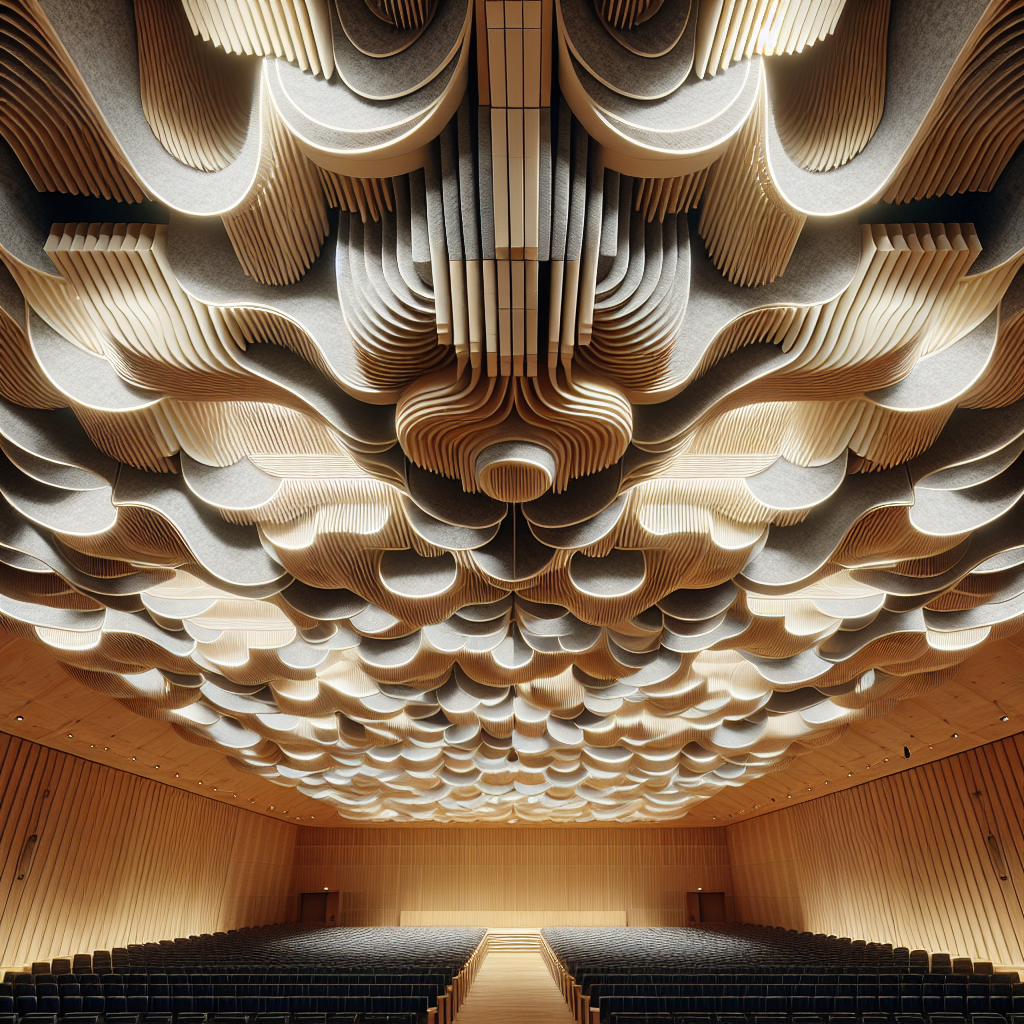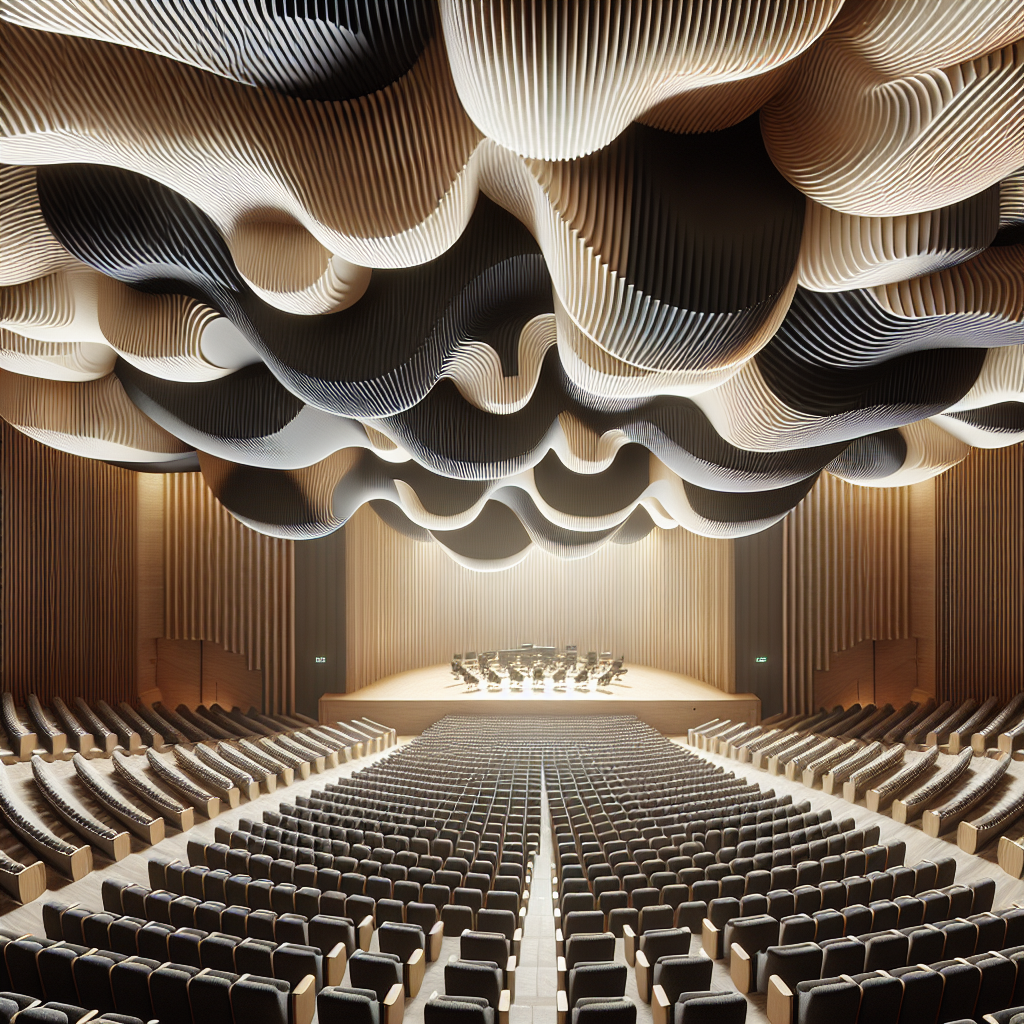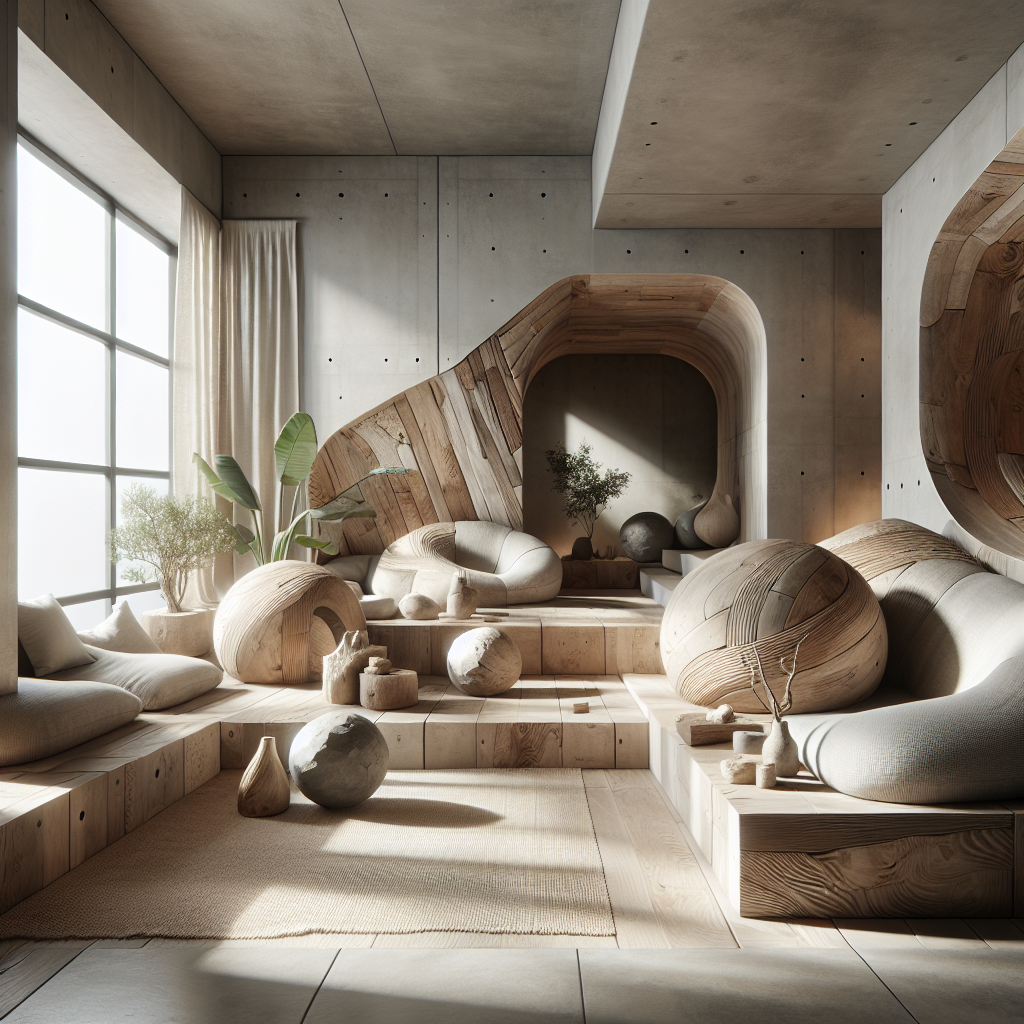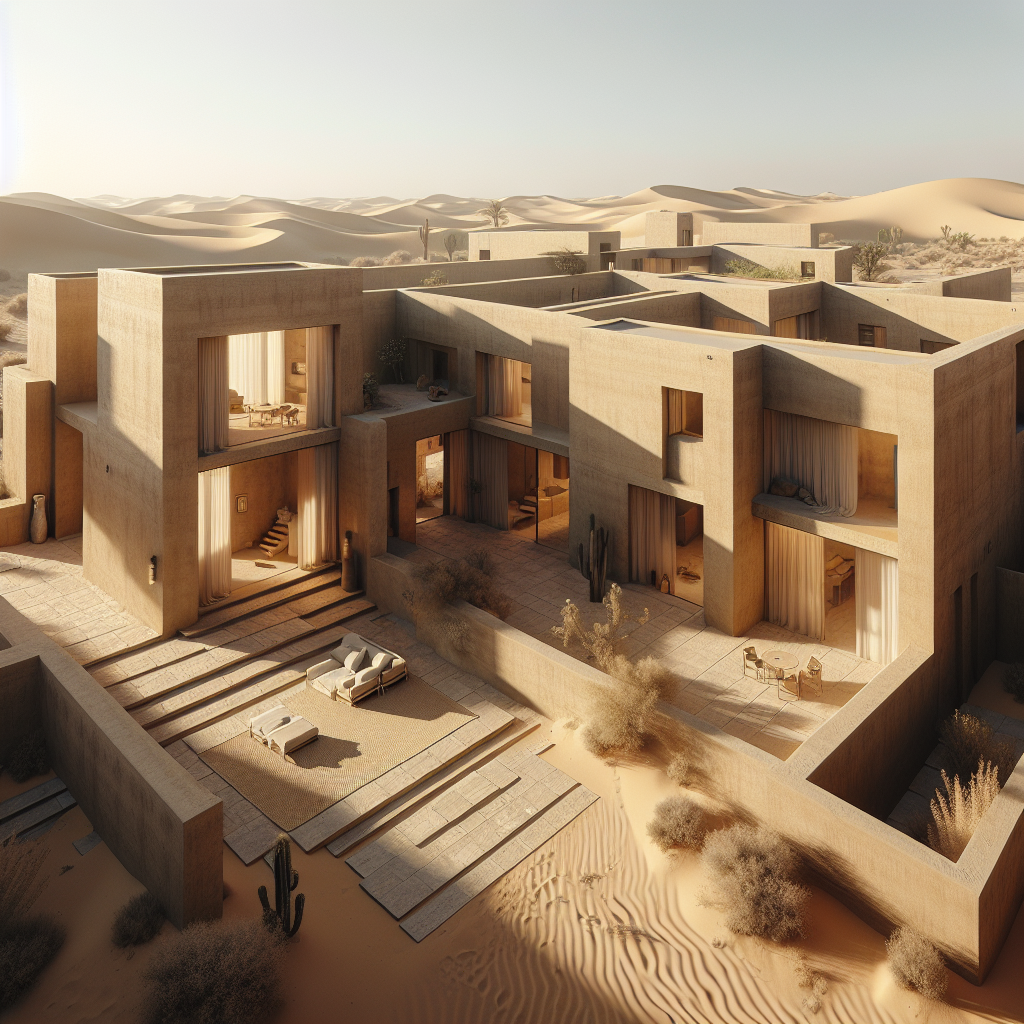Symphonic ceilings: acoustic baffles shaped like piano keys
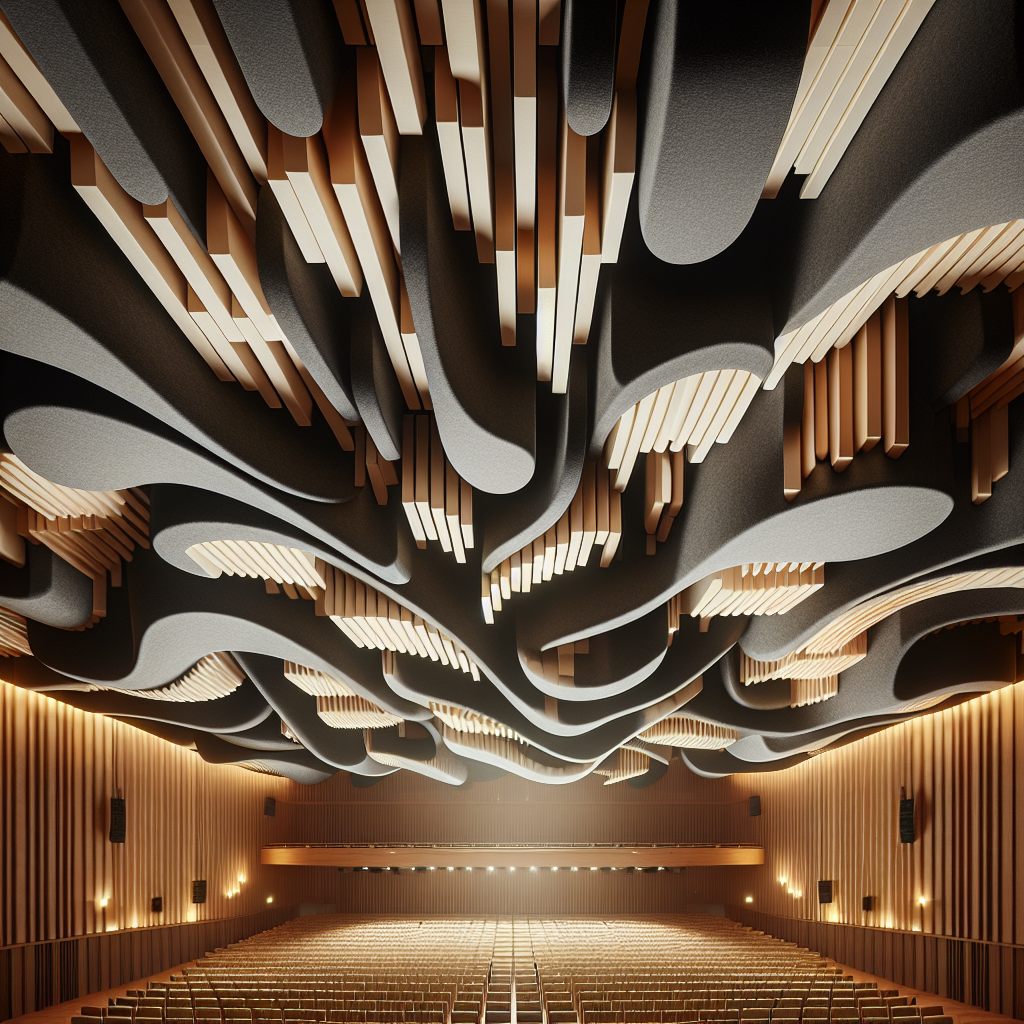
Symphonic Ceilings: Acoustic Baffles Shaped Like Piano Keys
Imagine stepping into a grand auditorium, the air humming with anticipation, the space itself poised like a silent orchestra awaiting its conductor. Above, a ceiling stretches out in elegant, rhythmic patterns—each acoustic baffle meticulously crafted to resemble the sleek, polished keys of a grand piano. This is not merely an exercise in visual delight; it’s a sophisticated fusion of form and function, where design harmonizes with acoustics to elevate spatial experiences. Welcome to the world of symphonic ceilings, an innovative architectural trend transforming interiors into immersive, melodic environments.
The Rise of Acoustic Design in Modern Architecture
In recent years, acoustic comfort has become an essential consideration in architectural design, particularly in spaces intended for communication, performance, and contemplation. According to a recent study by the Acoustical Society of America, acoustic quality significantly impacts human well-being, productivity, and emotional response within built environments. Recognizing this, architects and designers have begun integrating acoustic solutions directly into their aesthetic strategies, crafting spaces that not only sound exceptional but also captivate visually.
One such solution gaining traction is the use of acoustic baffles, suspended panels designed to absorb sound and reduce reverberation. Traditionally, these panels have been utilitarian, prioritizing function over form. However, contemporary designers are reimagining acoustic baffles as sculptural elements, transforming ceilings into expressive canvases that blend acoustic efficiency with artistic ingenuity.
Design Inspiration: Piano Keys as Acoustic Artistry
The inspiration behind piano key-shaped acoustic baffles lies in the inherent connection between music and architecture. Both disciplines share fundamental principles—rhythm, harmony, proportion, and balance. By translating the visual language of musical instruments into architectural elements, designers create spaces that resonate emotionally and intellectually with occupants.
These piano-inspired baffles typically feature elongated rectangular forms arranged in alternating patterns of black and white, mirroring the iconic keys of a piano. Crafted from sound-absorbing materials such as felt, foam, or sustainably sourced wood, these panels effectively manage acoustics while adding visual rhythm and depth to interiors. The result is a ceiling that appears to ripple and flow, evoking the dynamic energy of a musical performance.
Case Study: The Symphony Hall Renovation, Berlin
A prime example of this innovative approach is the recent renovation of Berlin’s renowned Symphony Hall. Completed in late 2024, the project transformed the auditorium’s previously stark ceiling into a captivating acoustic masterpiece. Designed by the acclaimed architecture firm Klang & Raum, the new ceiling features hundreds of piano key-shaped acoustic baffles suspended at varying heights, creating a mesmerizing three-dimensional effect.
Each baffle is meticulously calibrated in size, orientation, and spacing to optimize sound absorption and diffusion, ensuring crystal-clear acoustics throughout the hall. The visual impact is equally striking; as concertgoers enter, their eyes are immediately drawn upward, captivated by the interplay of light and shadow across the sculptural ceiling. The design not only enhances acoustic performance but also enriches the audience’s overall sensory experience, exemplifying the power of thoughtful, integrated design.
Material Innovation and Sustainability
As sustainability continues to shape architectural trends, designers are increasingly exploring eco-friendly materials for acoustic applications. Many piano key-inspired baffles now incorporate recycled or biodegradable materials, aligning with broader industry movements toward sustainable architecture. For instance, the use of reclaimed wood and natural fibers not only reduces environmental impact but also introduces warmth and texture to interiors, complementing the sleek aesthetic of piano keys.
Moreover, advancements in digital fabrication technologies, such as CNC milling and 3D printing, have enabled designers to achieve unprecedented precision and customization in acoustic panel production. These innovations allow for intricate detailing and bespoke configurations tailored specifically to the acoustic and aesthetic requirements of individual spaces. For more insights into how digital fabrication is reshaping design, explore our article on digital fabrication in architecture.
Beyond Concert Halls: Versatile Applications
While concert halls and auditoriums naturally lend themselves to musical themes, piano key-shaped acoustic baffles are finding applications in diverse environments. Corporate offices, educational institutions, hospitality venues, and even residential interiors are embracing this design trend to enhance acoustic comfort and visual appeal.
In corporate settings, these baffles contribute to quieter, more focused workspaces, reducing ambient noise and improving speech intelligibility. Educational facilities utilize them to create acoustically optimized classrooms and lecture halls, supporting better communication and learning outcomes. Hospitality venues, such as restaurants and hotels, employ piano-inspired ceilings to craft sophisticated atmospheres that delight guests visually and acoustically.
For instance, the newly opened Crescendo Hotel in Vienna features piano key acoustic baffles in its lobby and dining areas, seamlessly blending musical heritage with contemporary design. Guests are greeted by a ceiling that evokes the elegance of a grand piano, setting the tone for an immersive, memorable stay.
The Future of Acoustic Architecture
As architects and designers continue to explore the symbiotic relationship between sound and space, innovative acoustic solutions like piano key-shaped baffles will undoubtedly proliferate. Future developments may incorporate advanced technologies, such as embedded sensors and adaptive materials, enabling acoustic panels to dynamically respond to changing environmental conditions and occupancy patterns.
Furthermore, integrating biophilic design principles—such as natural textures, organic forms, and living materials—could further enhance the emotional resonance and sustainability of acoustic installations. For a deeper exploration of biophilic design’s impact, see our article on biophilic design and human well-being.
Ultimately, the evolution of acoustic architecture promises spaces that not only sound better but also inspire, uplift, and engage occupants on multiple sensory levels. Piano key-shaped acoustic baffles represent just one compelling manifestation of this broader trend, harmonizing aesthetics, acoustics, and sustainability in perfect unison.
Conclusion: A Harmonious Fusion of Design and Sound
The emergence of symphonic ceilings featuring piano key-shaped acoustic baffles exemplifies the innovative potential at the intersection of architecture, design, and acoustics. By embracing musical metaphors and material innovation, designers are crafting spaces that resonate deeply with occupants, enhancing both acoustic performance and visual delight.
As we continue to seek environments that nurture well-being, creativity, and connection, acoustic design will play an increasingly vital role. Symphonic ceilings, with their elegant blend of form and function, offer a compelling vision of architecture’s harmonious future.
For further exploration of how innovative design is shaping our built environment, consider reading our articles on virtual reality in architecture and adaptive reuse in architecture.
As architects and designers continue to orchestrate spaces that inspire and uplift, the symphonic ceiling stands as a testament to the power of design to transform our sensory experiences, one note—and one baffle—at a time.

